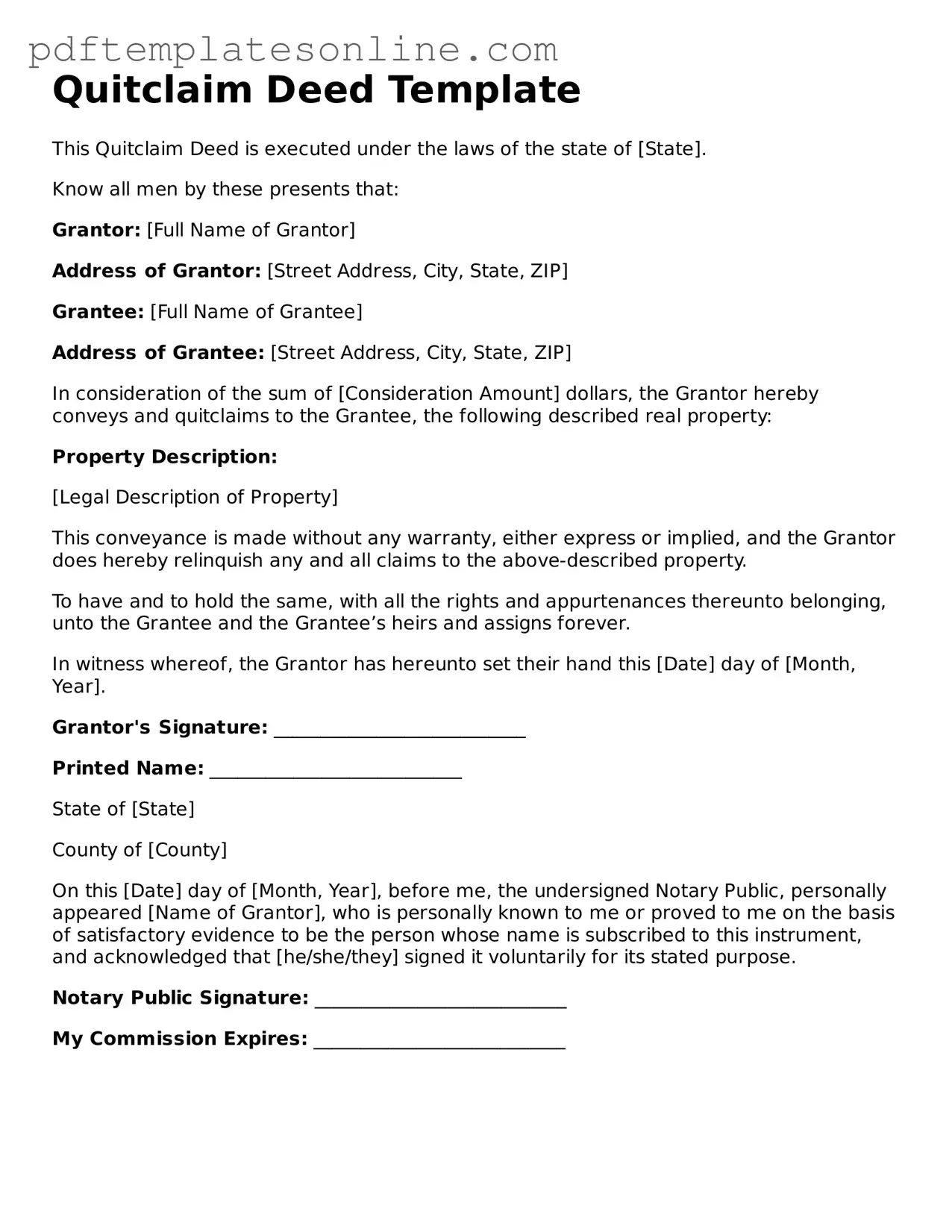Filling out a Quitclaim Deed form can seem straightforward, but many people make common mistakes that can lead to significant issues later on. One frequent error is failing to include the correct legal description of the property. This description should be detailed enough to clearly identify the property being transferred. Without it, the deed may not be valid, and the transfer of ownership could be challenged.
Another mistake involves not properly identifying the grantor and grantee. The grantor is the person transferring the property, while the grantee is the one receiving it. It’s crucial to use full names and, when applicable, include marital status. Omitting this information can create confusion and complicate future transactions.
People often overlook the need for signatures. A Quitclaim Deed must be signed by the grantor to be effective. If the grantor is married, some states require both spouses to sign, even if only one spouse is transferring their interest. Failing to obtain the necessary signatures can render the deed invalid.
Another common error is neglecting to have the deed notarized. Many states require that the Quitclaim Deed be notarized to be legally binding. This adds an extra layer of verification to the transaction. Skipping this step can lead to complications when trying to record the deed with the county.
Some individuals forget to record the Quitclaim Deed after it has been completed. Recording the deed with the appropriate county office is essential for protecting the new owner's rights. If the deed is not recorded, it may be difficult to prove ownership in the future, especially if another claim arises.
Additionally, people sometimes fail to check for existing liens or encumbrances on the property before transferring it. A Quitclaim Deed does not eliminate any debts associated with the property. If there are liens, the new owner may inherit these financial burdens, which can lead to unexpected challenges.
Another mistake is using outdated forms. Laws and requirements can change, so it’s important to use the most current version of the Quitclaim Deed form. Using an outdated form may lead to legal issues or rejection by the county recorder’s office.
Finally, individuals may not seek legal advice when needed. While it’s possible to fill out a Quitclaim Deed without assistance, consulting with a legal expert can help avoid pitfalls. A lawyer can provide guidance tailored to specific circumstances and ensure that all legal requirements are met.
